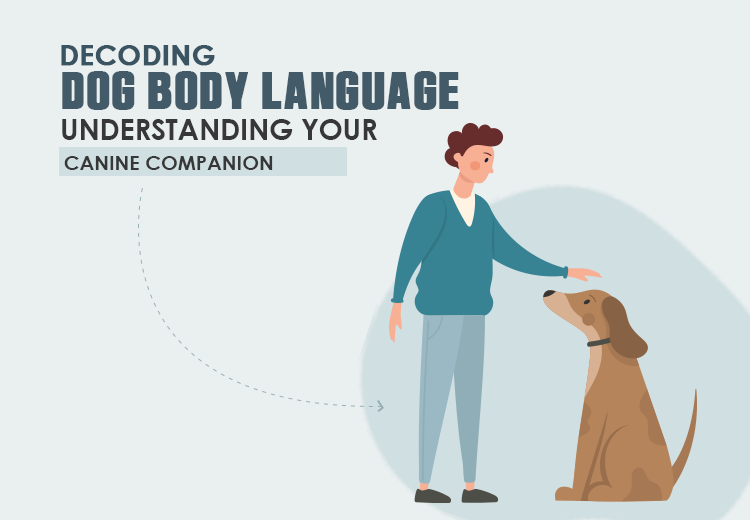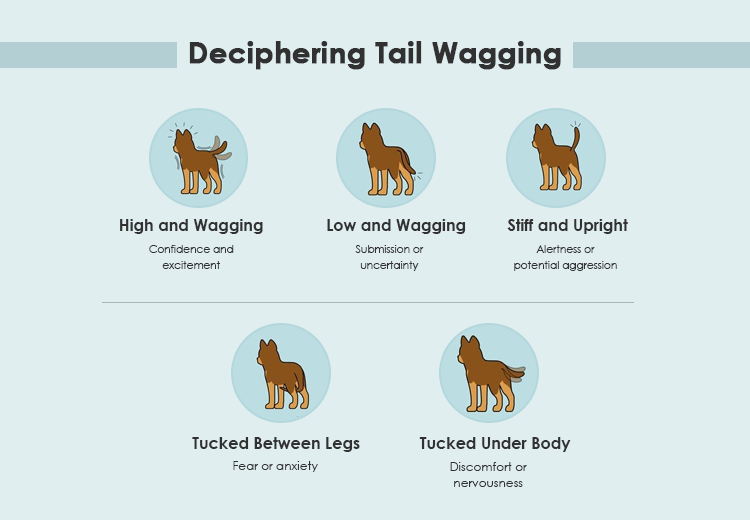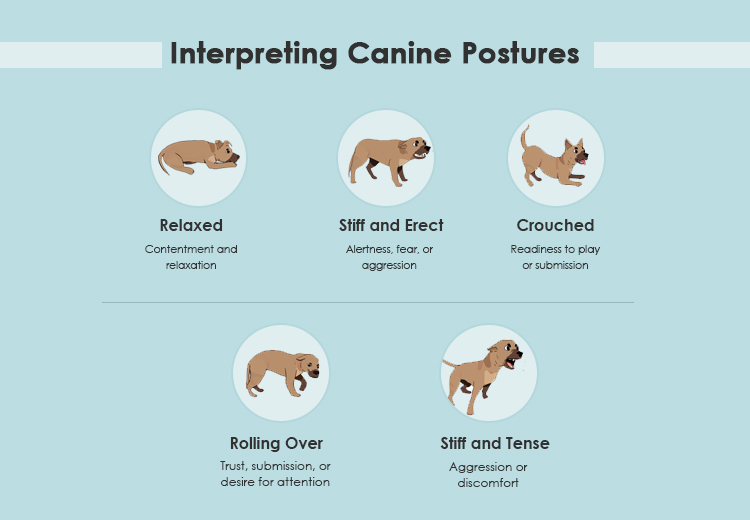Apr 26, 2024

As pet parents, understanding our dogs' body language is crucial for effective communication and building a strong bond. Dogs rely heavily on non-verbal cues to express their emotions, needs, and intentions. In this blog, we'll unravel the subtle cues and signals that dogs use to convey their feelings, enabling you to forge a deeper bond with your loyal companion. From the wag of a tail to the tilt of an ear, join us as we explore the nuanced language of dogs, empowering you to better understand and respond to your canine friend's needs.
Tail wagging is perhaps one of the most well-known forms of dog communication, but its meaning can vary depending on the context. While a wagging tail often signifies happiness and excitement, it's essential to consider other factors such as the speed, height, and stiffness of the wag. A high, fast wag may indicate excitement or arousal, while a low, slow wag could signal insecurity or submission. Conversely, a stiff, rapid wag may indicate agitation or aggression.

To better understand your dog's emotions, let's explore the various tail positions and their meanings:
Indicates confidence and excitement.
Suggests submission or uncertainty.
Signifies fear or anxiety.
Indicates alertness or potential aggression.
Suggests discomfort or nervousness.

In addition to tail wagging, dogs also use their body posture to convey information. Here are some common postures and their meanings:
Loose muscles, open mouth, and ears in a neutral position indicate contentment and relaxation.
Stiff body, raised fur, and tense muscles may signal alertness, fear, or aggression.
Lowered body with front legs bent and hindquarters raised suggests readiness to play or submission.
Exposing the belly indicates trust, submission, or a desire for attention.
Stiffened body, raised hackles, and direct eye contact may indicate aggression or discomfort.
A dog's ears are highly mobile and can convey a wide range of emotions. Erect ears signal attentiveness or curiosity, while flattened ears may indicate fear or aggression. In some breeds, such as sighthounds, ears that are pinned back against the head can signal relaxation or contentment. Paying attention to subtle changes in ear position can help us understand how our dogs are feeling and respond accordingly.
While dogs may not have the same range of facial expressions as humans, they can still convey a wealth of information through their expressions. Relaxed, open mouths and soft, relaxed eyes typically indicate contentment, while tense lips and narrowed eyes may signal stress or discomfort. Yawning can be a sign of relaxation or stress relief, while lip licking may indicate anxiety or anticipation. By observing these facial cues, we can better understand our dogs' emotional state and respond accordingly.
By paying attention to your dog's body language, you can gain valuable insights into their emotions and needs. Understanding body language can help you better interpret your canine companion's signals and respond appropriately. Remember to consider the context and other environmental factors when deciphering your dog's body language, and always approach with patience, empathy, and respect.